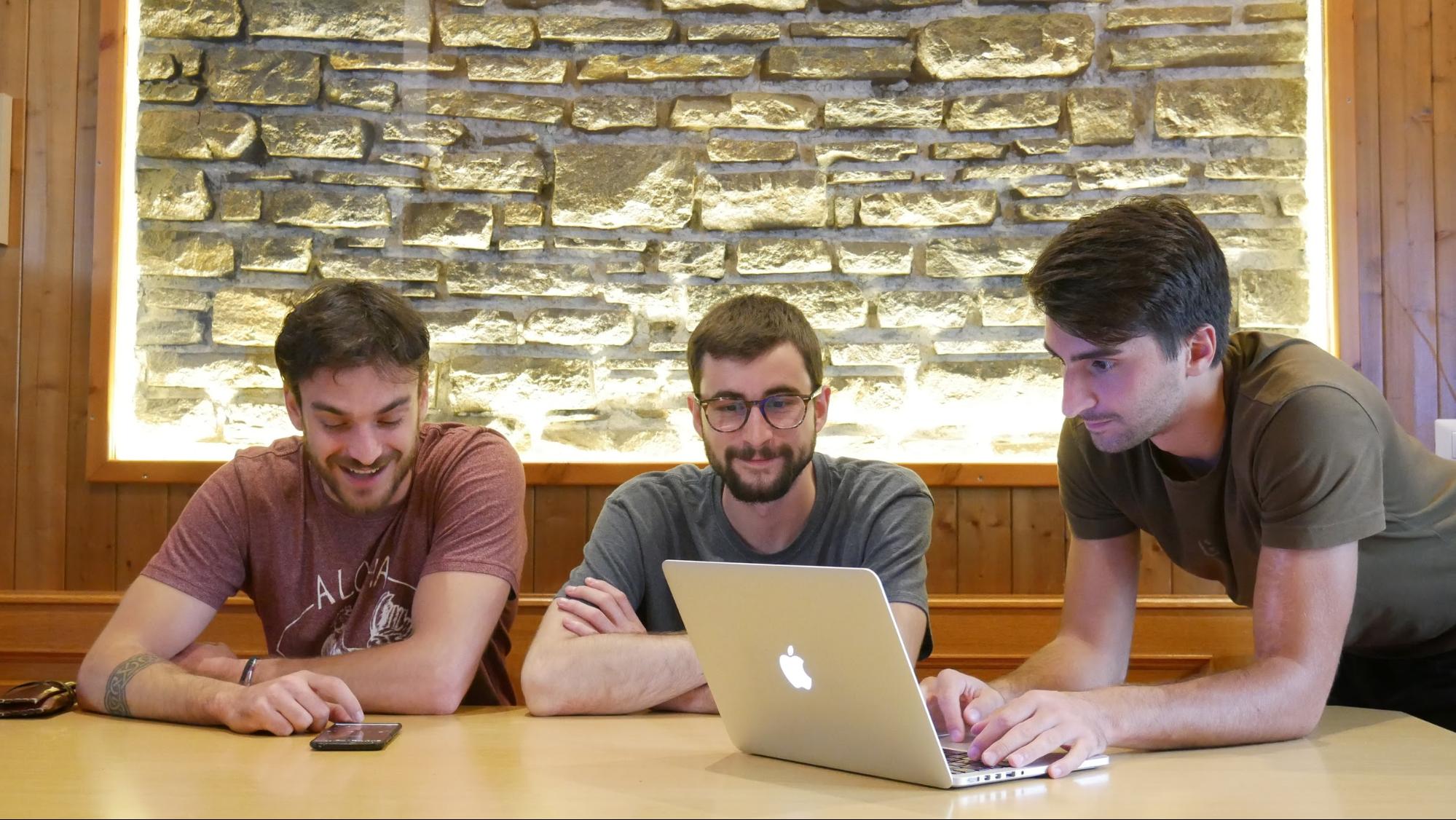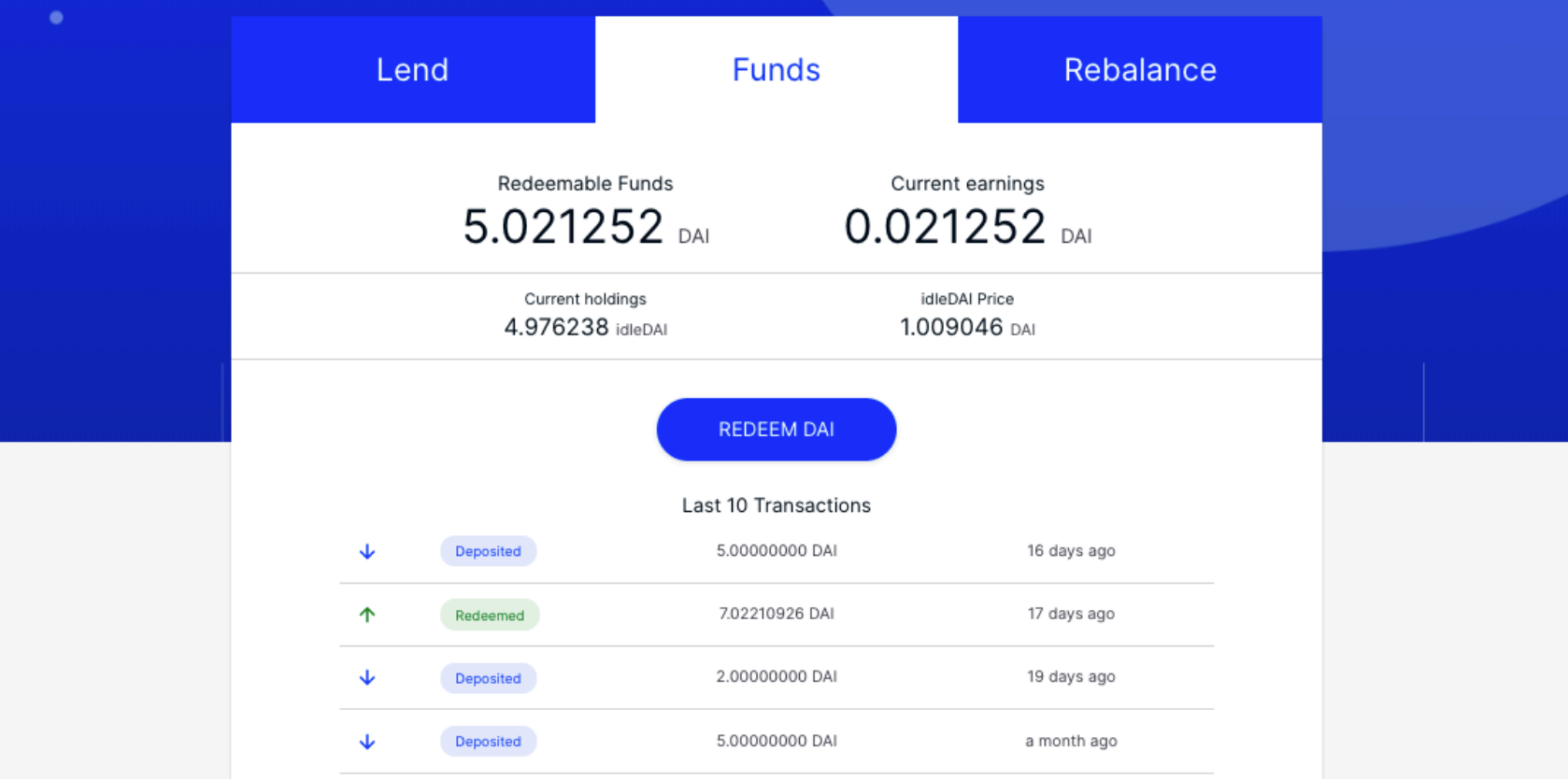Matteo told us how Idle tokenizing the best interest rate across different DeFi lending protocols.
Hello! What’s your background, and what are you working on?
Hi, I’m Matteo Pandolfi, co-founder and financial/business developer at Idle. We are an Italy-based team, already experienced with algorithmic trading and arbitrage bots on different CEXs/DEXs. William Bergamo, the other co-founder and lead blockchain developer, and I know each other since high school and always hacked stuff together. We met Samuele Cester, skilled full-stack developer, along the way working on our previous blockchain projects.
 Idle team: Teo, Willy, and Sam.
Idle team: Teo, Willy, and Sam.
William bought his first ETH, back in 2016, but he got somewhat scared after The DAO’s hack. He came back in April 2017, looking for e-sports betting arbitrage alternatives, and started building arbitrage bots on various centralized exchanges first and decentralized ones later. I joined him helping with arbitrage algorithms and then did academic research on “At0m”, a DEX arbitrage bot, in collaboration with William and Ca’ Foscari University of Venice. Samuele joined the crypto space in 2017 because also interested in both computer science and finance and we started working and iterating together on other side projects, in the last few years.
At Idle, we are tokenizing the best interest rate across different lending protocols on Ethereum money market. In this way, users don’t have to switch funds between lending protocols manually. By buying and holding idleTokens, user’s underlying position will be rebalanced dynamically, when the highest rate available, giving the most profitable return.
Our decentralized rebalance is an user-based process that allows everyone to keep Idle “up-to-date” with the highest available yield. We are not relying on a centralized system for monitoring interest rates on different lending protocols. Instead, every user interaction with our smart contract will trigger rates check and, if needed, Idle pool will be rebalanced. This process could be activated if the tracked interest rate is not the highest one. Hence we need just one user that interacts with Idle to let the entire user funds pool yield the highest interest rate. The more, the merrier.
What’s Idle backstory?
William and I have been working on At0m since July 2018. Initially, we planned to test interest-bearing tokens as an implementation for our DEXs arbitrage bot, to earn interest while funds were idle, in a no-arbitrage situation. After some pivoting, we decided to develop a single product page that allows users to mint a token that incorporates different interest-bearing tokens.
We proposed the first version for ConsenSys Beyond Blockchain hackathon in July 2019 and won 2nd place prize. We got then accepted in a pre-acceleration program with ConsenSys (Personal Best Relay program) where we completed all the required goals and obtained initial funding.
What went into building Idle?
We made a full client dApp using Truffle, React and Rimble, and contracts have been developed in Solidity. We proposed the first version of Idle for Beyond Blockchain hackathon, and considering the limited amount of time we had to ship an MVP, we decided to implement just Compound and Fulcrum. We are planning to add dY/dX and other new protocols in the future. It took about two weeks from scratch to mainnet, and since that moment we kept working on Idle.

With our current contracts, users are allowed to mint idleDAI using DAI on our app. When a user mints idleDAI on Idle, smart contract checks the current interest rates on Compound and Fulcrum. Consequently, Idle smart contract mints cDAI/iDAI (depending on the highest interest rate) proportionally to the DAI amount supplied. Indeed, idleDAI represents a right to redeem a share of DAI locked into cDAI/iDAI. Users can get back DAI + interest by redeeming idleDAI via our smart contract.

At the moment, Idle is still a beta and has been initial-battle tested but not audited at the moment, because we are planning to release a new version of Idle shortly. The current version of the contract rebalances the whole pool from one protocol to another when rates change, and this could potentially lower the interest rate of the target lending provider, so we are developing the new contract with a dynamic fund allocation strategy, and once ready it will be audited. Currently, we have limited the max amount of IdleDAI that could be minted to prevent such edge cases.
What’s your business model?
Idle can adopt a transactional business model because it enables a financial transaction on behalf of a customer and collects a fee (a percent of the underlying transaction). However, we don’t want to collect fees on earned interest to give users the best interest rate return, our main value proposition. Our monetization strategy mainly consists of charging a small fee on different services that we will implement such as fiat-onboard, insurance upselling and ETH-to-Token conversion, and then on products built on-top of idleTokens.
Idle’s first customers’ segment will be DAI lenders (users who are already using lending protocols) because they will be able to appreciate the interest rates rebalance process immediately. Gaining trust with smart contract audit and battle-testing Idle through time will expand that segment to stablecoins holders, which can maximize returns on their stablecoin positions and use on-top services such as smart contract insurance. The next segment will include non-crypto users that want to yield a better return on their assets (compared to the traditional banking system) which will use all Idle’ on-top services, including the fiat-to-crypto gateway.
Looking at the competitor’s side, other projects that are trying to optimize lending/staking returns came out, but our solution can be considered uniquely positioned because of the previously mentioned decentralized rebalance process, that allows users to not rely on a centralized system that checks the interest rates.
What’s your position on the regulatory landscape today?
We would need more legal advisory to clean up our regulatory landscape position, but we recently made some research on this topic. Our ERC20 token (idleDAI), is an interest-bearing token that allows our customers to continually yield an optimized interest rate return that will be the highest on the market depending on users interactions. From SEC securities classification, the type of security/tokens offered by Idle smart contract could be considered as Pooled Investment Fund Interests or a Sale and issuance of rights to receive tokens in the future via a Simple Agreement for Future Tokens (SAFT).
On the fiscal side, Idle is a “tax-friendly” because it creates less taxable events on behalf of users. Idle generates a taxable event only when users redeem their idleTokens, but no taxable event made when users rebalance pool on Idle. This feature can be translated into easier accountability for tax filing, particularly if you compare it to moving funds manually from one protocol to another to maximize lending returns.
What are your goals for the future?
Our critical milestones for next months are:
- Complete and secure new Idle smart contract
- New coins and other lending protocols implementation
- Additional services implementation
- Start collaborations with other projects/products and promote Idle
- Research and development of new Idle features and product on-top of Idle
We are now working on the dynamic funds allocation, that would potentially protect Idle from possible identified edge cases, while we go through the smart contract audit process. With our new smart contract, it will be possible to implement different services/products on-top of Idle. We are also looking for some collaboration with other DeFi projects. Idle further developments vary from new features (like previously mentioned fiat-onboard, smart contract insurance) to idleTokens integration in different DeFi products/wallets, as well as new coins and lending protocols implementation.
To validate our ideas and follow an user-driven development, we planned to organize an event about DeFi and a business-game about Idle with an italian university finance club. We might hold a hackathon for finance and CS students with other projects if the audience expresses a positive response.
What are your future thoughts for the DeFi market?
In an ideal world, blockchain complexity abstracted away from users, and they don’t need to understand technicalities to use our and other blockchain products. Gas should be a thing only developers know about it, and smart contract hacks losses are a thing of the past thanks to universal insurance implemented in all products. This is why we are planning to develop a user-friendly product on-top of Idle, that would include fee abstraction and insurance included. Idle will be a layer token for maximizing lending returns but also to build on-top products that using our interest-bearing token, allowing new token experiences and shared revenue models.
Where can we go to learn more?
You can try Idle at idle.finance. If you want to follow our updates, subscribe to our mailing list.
If you have any questions, please join and ask on our social channels:
